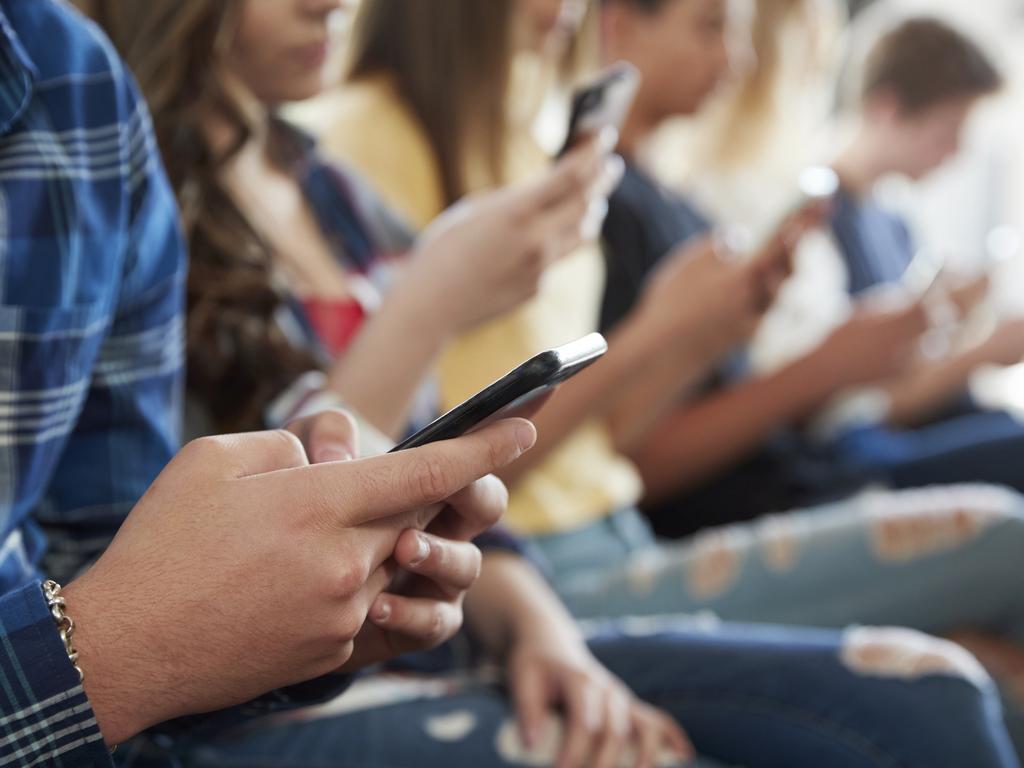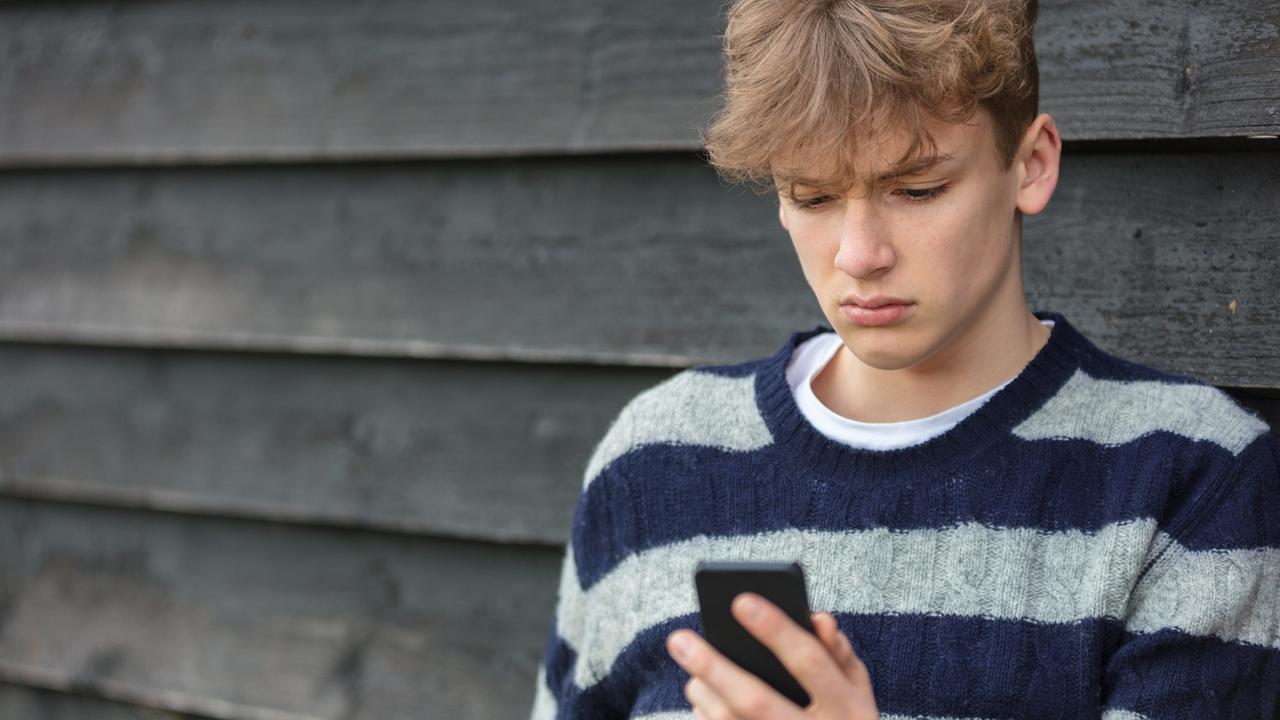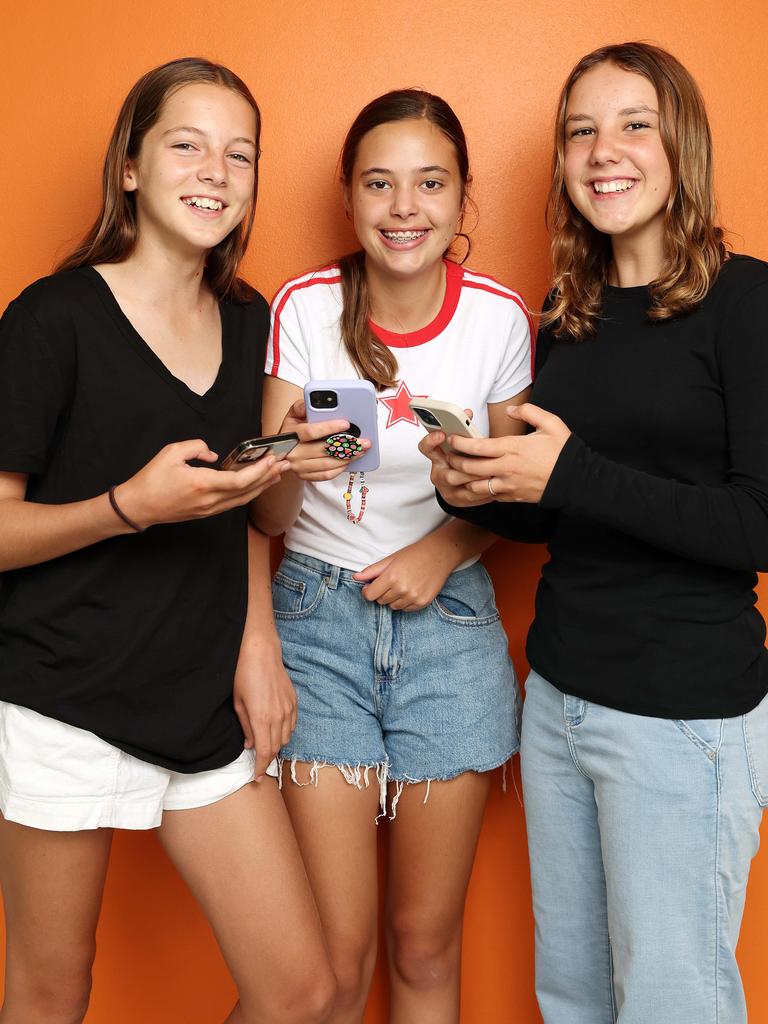Pilot program aims to help Aussie kids stop the zombie scrolling
A world-first program is set to help Aussie tweens and teens to deal with their ‘online lives’ after worrying data found half felt depressed when scrolling through their social media

READING LEVEL: ORANGE
Aussie teenagers will get lessons at school on how to manage their personal screen time.
A pilot* involving 3000 students will start this week and is expected to scale up to include 30,000 Year 7 and 8 children from 2025.
It will be delivered by the mental health charity Black Dog Institute*, which has teamed up with the Bupa Foundation* to provide the world-first program.
A recent News Corp survey found half of Aussies felt sad or depressed after scrolling through their social media.

Black Dog Institute Associate Professor Aliza Werner-Seidler said they were launching the program in response to young people asking for help on how to manage their online lives.
“They have been telling us they want help,” Assoc Prof Werner-Seidler said. “But it is not about getting them off their devices, it’s about teaching them healthy ways to use them.”
She said the 20-minute long, in-school program will target teens in early adolescence just as they begin to use their devices more independently.
She said the aim was to get children to understand the link between what they’re doing online and how it makes them feel. If watching certain videos is making them feel bad, to understand that the algorithm* will continue to show them those types of videos, and how best to manage that.

The educators will use fact-based evidence* to explain why they need to balance screen time with physical exercise and face-to-face contact with friends and family.
“Every person is different, so how long someone should spend online is down to the individual, but we want to give them the tools and information to make the right choices,” Assoc Prof Werner-Seidler said.
“The timing at around 12 to 13 years of age is intentionally chosen to coincide with the sharp rise in depression and anxiety rates, making it an optimal* time to work with young people to enhance* their resilience* and prevent mental illness,” she said.

‘TIKTOK IS ENDLESS’: WHY KIDS AGREE WITH SWITCH OFF RULES
When Hazel Easter’s parents told her they wanted to put a time limit on how long she could spend on social media, she wasn’t happy.
But after some negotiation*, they agreed to a three hour limit a day, including Snapchat, which is her main means of communication with friends.
Hazel, 12, said that TikTok was her biggest time waster, and when she gets a five minute warning on her device that she is approaching her limit, she often can’t believe she’s been on it that long.
“I don’t mind the time limit, it gets me off my phone and doing something else, like doing things with family and friends,” Hazel said. “It’s actually nice getting off it, rather than just sitting in my bedroom doing nothing.”

Her friend Frankie Gibson, 13, agreed that it was easy to get sucked into scrolling.
“TikTok is endless, you can keep scrolling forever,” she said.
Maeya Cassim, also 13, said she knows that the social media companies use algorithms to keep feeding users similar videos to ones they have watched.
All three said they knew of peers who used their phones for far longer than they did and late into the night.
They all understood that their phones were addictive*, but agreed getting off them or making healthy changes was hard.
Frankie said she took proactive* action if her scrolling turned into a negative experience.
“When an influencer makes me feel bad about myself, I unfollow them,” Frankie said.

TIPS TO IMPROVE YOUR MENTAL HEALTH
Black Dog Institute’s academic clinical psychologist* Peter Baldwin’s practical tips on how you can help yourself:
*If you’re depressed or anxious, do the opposite of what your head is telling you; go to that party, ring that friend, get out of bed and go for a walk.
*Don’t worry about bothering people you think are busy, they’re probably sitting on the sofa thinking the same thing as you. Make that call.
*Make use of your phone, not to scroll through social media, but to connect with friends or family to arrange a face-to-face meet up.
*Turn the dial up, increase your social connections and see how much happier you feel.
*Talk to your GP, trusted friends and family.
POLL
GLOSSARY
- pilot: small-scale, short-term experiment or test case to see how something works
- Black Dog Institute: the organisation is named for the expression “black dog”, a way of referring to feelings of depression, that is great sadness and lack of energy
- Bupa Foundation: a health promotion charity to help people live healthier, happier lives
- algorithm: mathematical instructions that, especially if given to a computer, helps to calculate an answer to a problem
- evidence: what you see, experience, read, or are told that causes you to believe that something is true or has really happened
- optimal: the best, most favourable or desirable
- enhance: to improve the quality, amount, or strength of something
- resilience: the ability to be happy and successful again after something difficult or bad has happened
- negotiation: discussion between people with different goals and view who are trying to reach an agreement
- addictive: anything that makes you want more of it all the time beyond your control
- proactive: taking action to make changes yourself rather than reacting to things that happen
- clinical psychologist: a psychologist, someone who studies the human mind, emotions and behaviour, who specialises in mental health
- GP: general practitioner, your family doctor
EXTRA READING
Extra-curricular kids happier and healthier
TikTok sets screen time limit on teens
Schools sue tech giants over social media harm
QUICK QUIZ
- How many students are taking part in the pilot program?
- How many are expected to across what years are expected to take part by 2025?
- What is Hazel Easter’s daily time limit as agreed with her parents?
- Which social media platform does Hazel regard as her biggest time-waster?
- What do social media companies use to keep feeding you endless content?
LISTEN TO THIS STORY
CLASSROOM ACTIVITIES
1. Screen time contract
Write up a screen time contract between you and your parents to adhere to. Think about how much time you’d like to be able to communicate with friends and use social media, and balance that with time you need for other activities such as exercise, after school activities and connecting with family and friends face-to-face.
Your contract may involve a Monday to Friday time limit and a weekend time limit.
How can you set this limit on your device of choice?
Take your contract home and discuss with your parents if they think it is reasonable.
Time: allow 25 minutes to complete this activity
Curriculum Links: English, Digital Technologies, Personal and Social, Critical and Creative Thinking
2. Extension
Make a list of things that make you feel good on social media and the things that make you feel worried, sad or anxious. How can you limit the negative things you see?
THINGS THAT MAKE ME FEEL GOOD
THINGS THAT DON’T
Time: allow 15 minutes to complete this activity
Curriculum Links: English, Digital Technologies, Personal and Social, Critical and Creative Thinking
VCOP
Writing activity: balancing screen time
Imagine you are a student participating in the new program about managing screen time. Write a short opinion piece to share your thoughts on the program. Consider who your audience might be, such as other students, parents, or teachers.
Introduction:
Begin with a catchy introduction to grab the reader’s attention.
Example: “Have you ever felt a bit down after spending too much time on your phone or tablet? Well, I have exciting news! Our school is starting a program to help us manage our screen time better.”
Express Your Opinion:
Share your personal thoughts on the program.
Example: “I think it’s a fantastic idea! Sometimes, I get so caught up in watching videos that I forget to do other fun things. This program can teach us how to balance our screen time and still enjoy life.”
Include Facts:
Use information from the article to support your opinion.
Example: “Did you know that half of Aussies feel sad or depressed after scrolling through social media? Learning to balance our screen time with other activities, like playing outside or talking to friends, can make a big difference.”
Share Personal Experiences:
Talk about your own experiences with screen time and any changes you might make.
Example: “My friend Hazel set a three-hour limit on her social media use. At first, she wasn’t happy about it, but now she realises it’s a good way to enjoy other things with family and friends.”
Consider the Audience:
Think about who might be reading your opinion piece.
Example: “If you’re a parent reading this, maybe you can understand us better. Sometimes, we need a little help figuring out how to use our devices in a healthy way.”
Conclusion:
Wrap up your opinion with a strong conclusion.
Example: “I’m excited about the program, and I hope it helps us all use our screens wisely. Let’s enjoy our time online and offline!”
Remember to use expressive language, and feel free to add any creative elements to make your opinion piece engaging.
Re-read your work and check it is clear and makes sense. Can you edit and up-level any of your writing to be more engaging to the audience?
Share your story with someone in the class.


